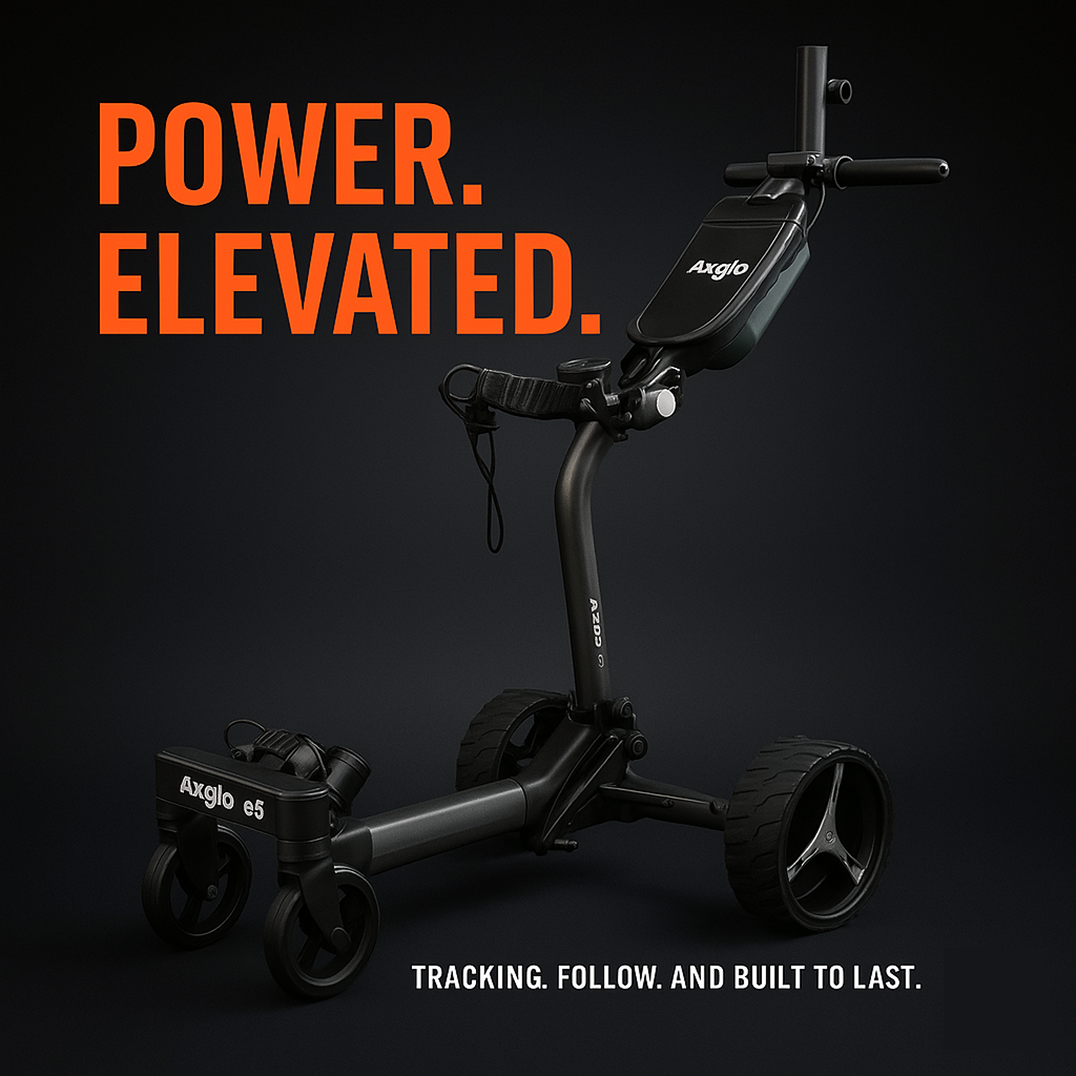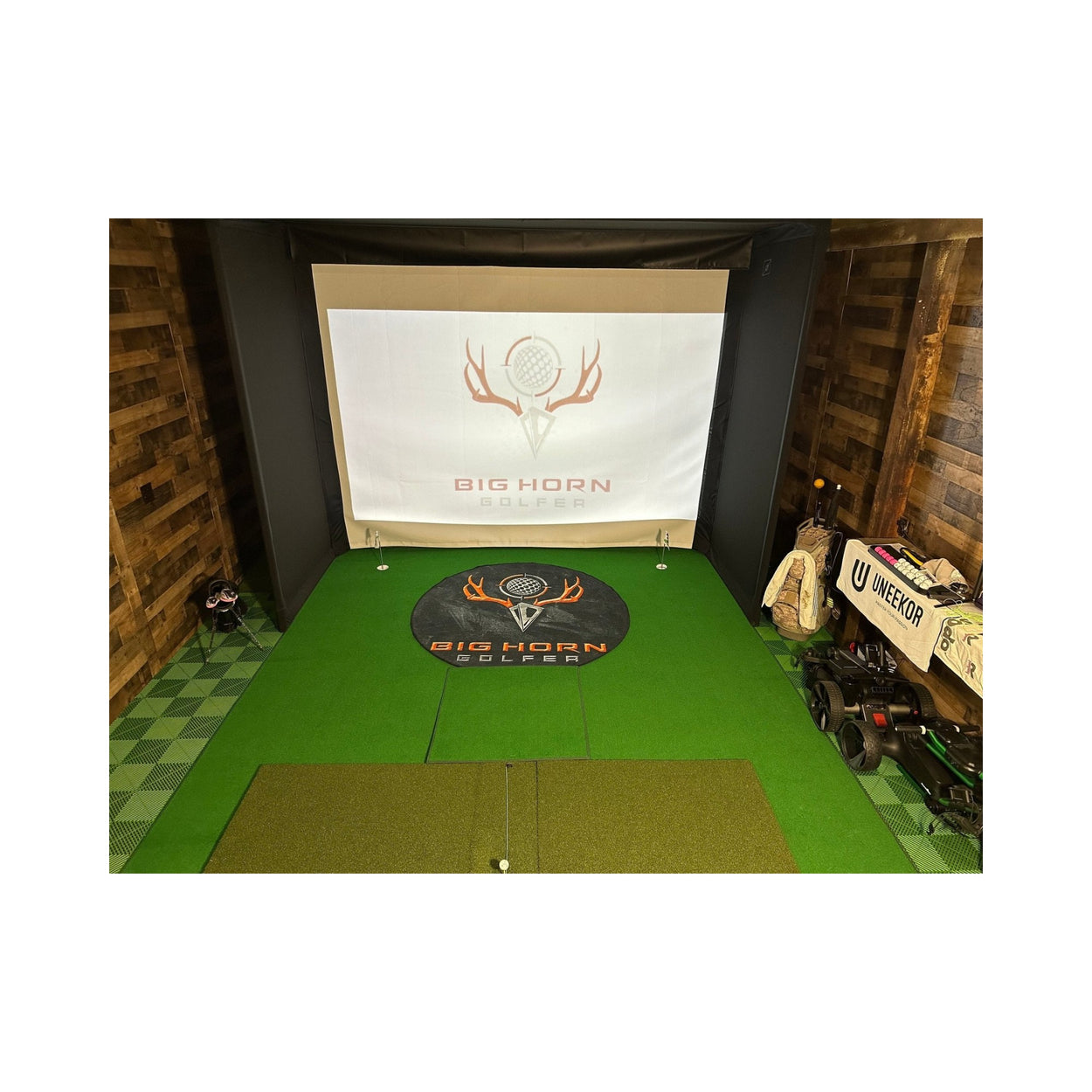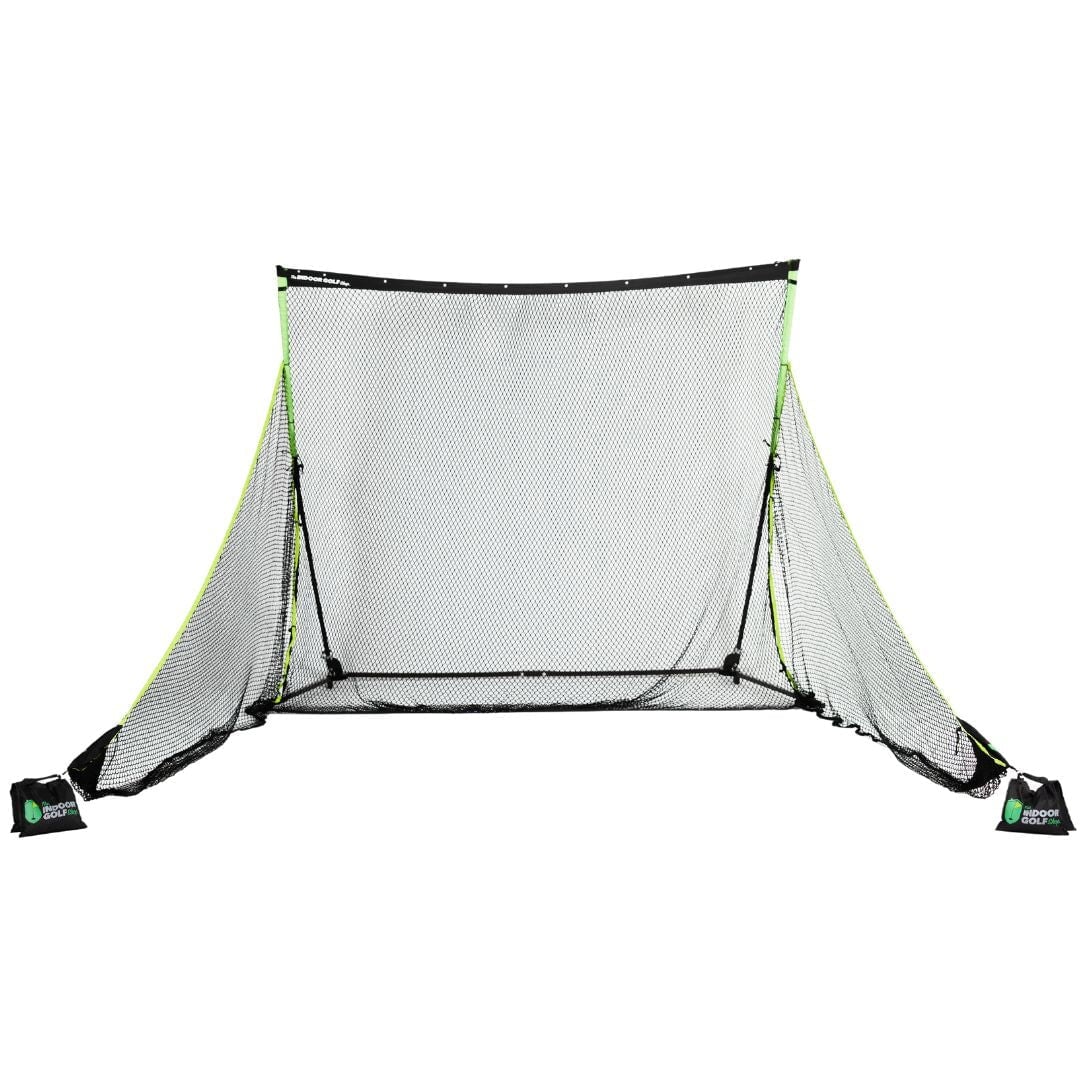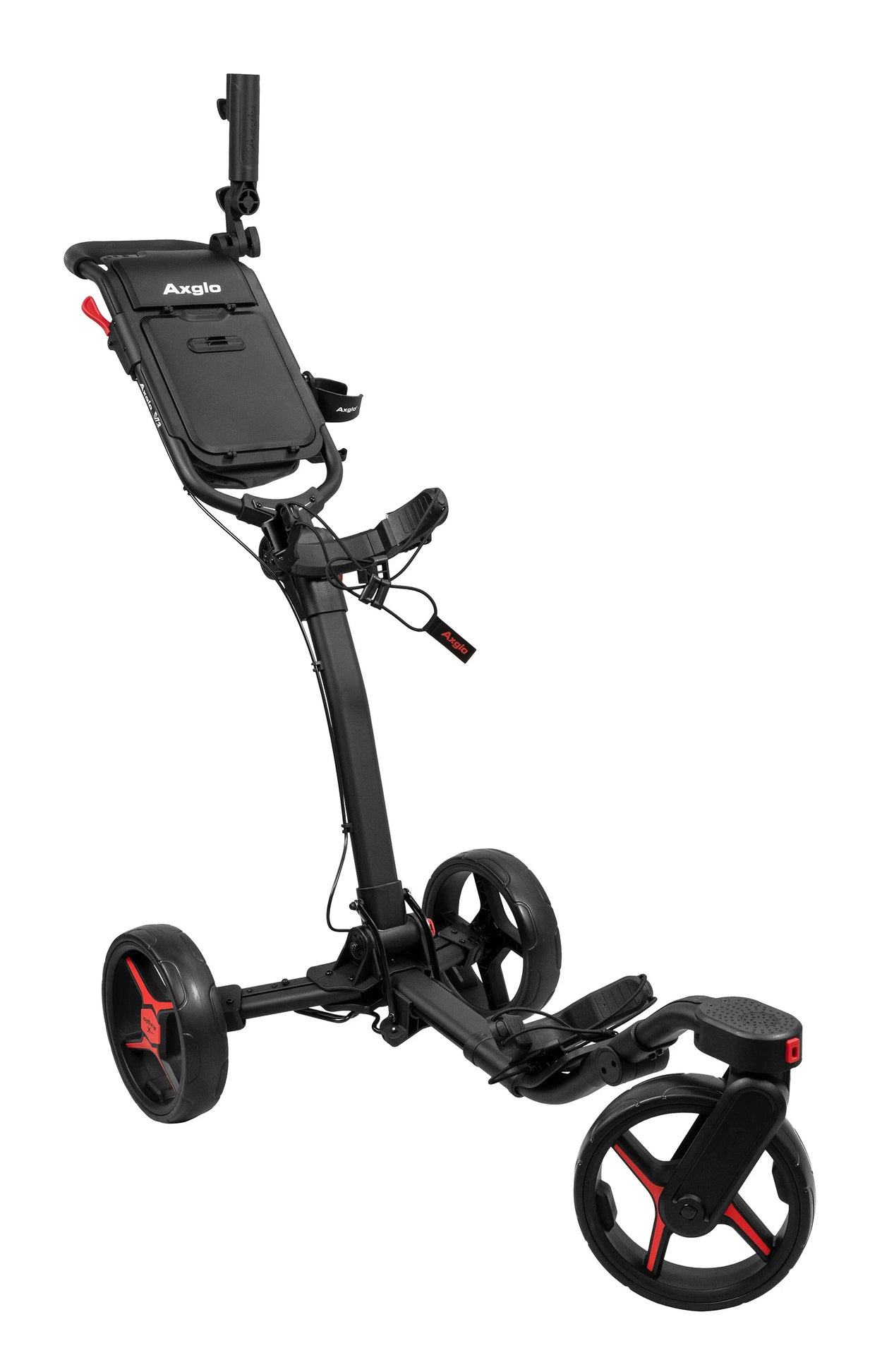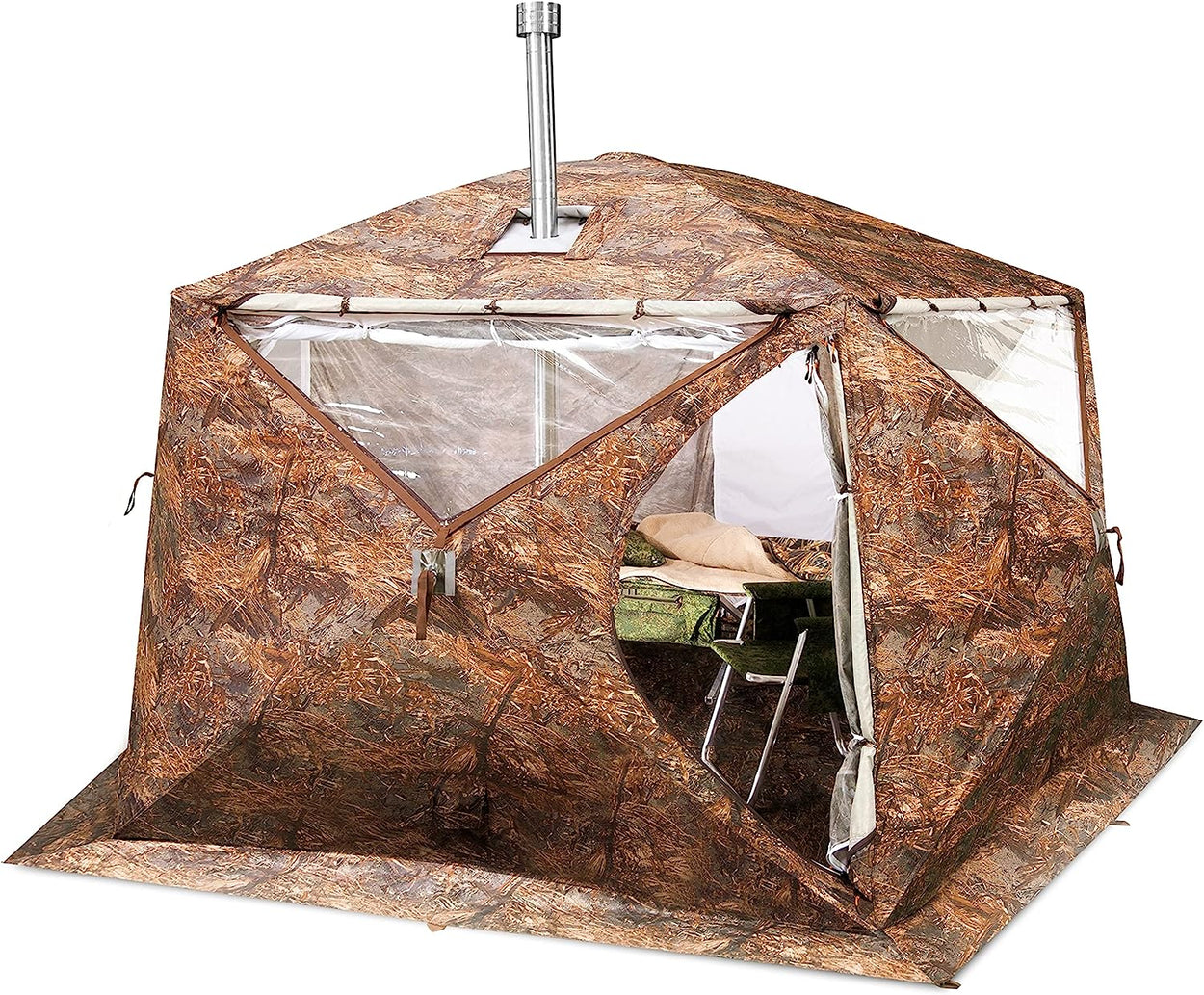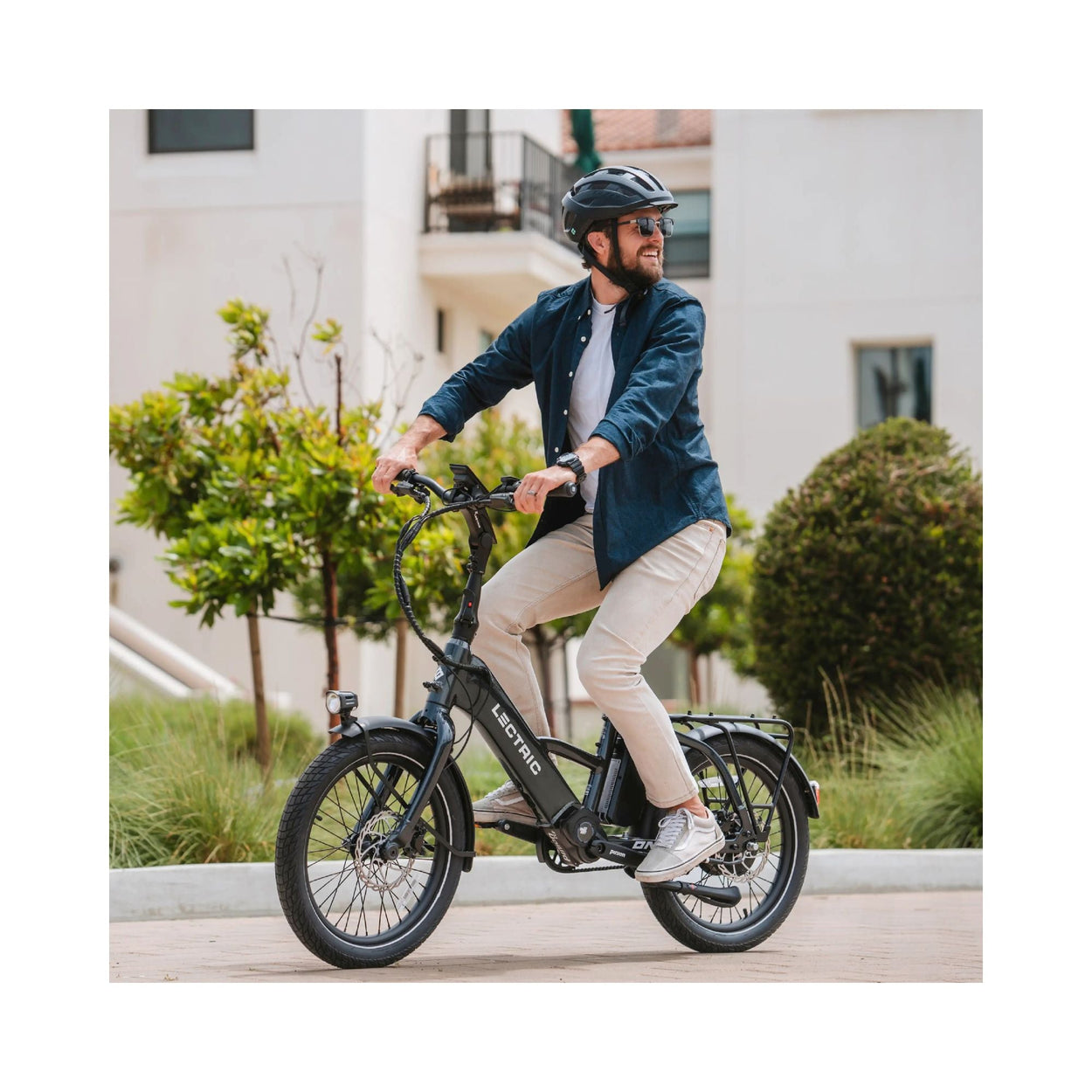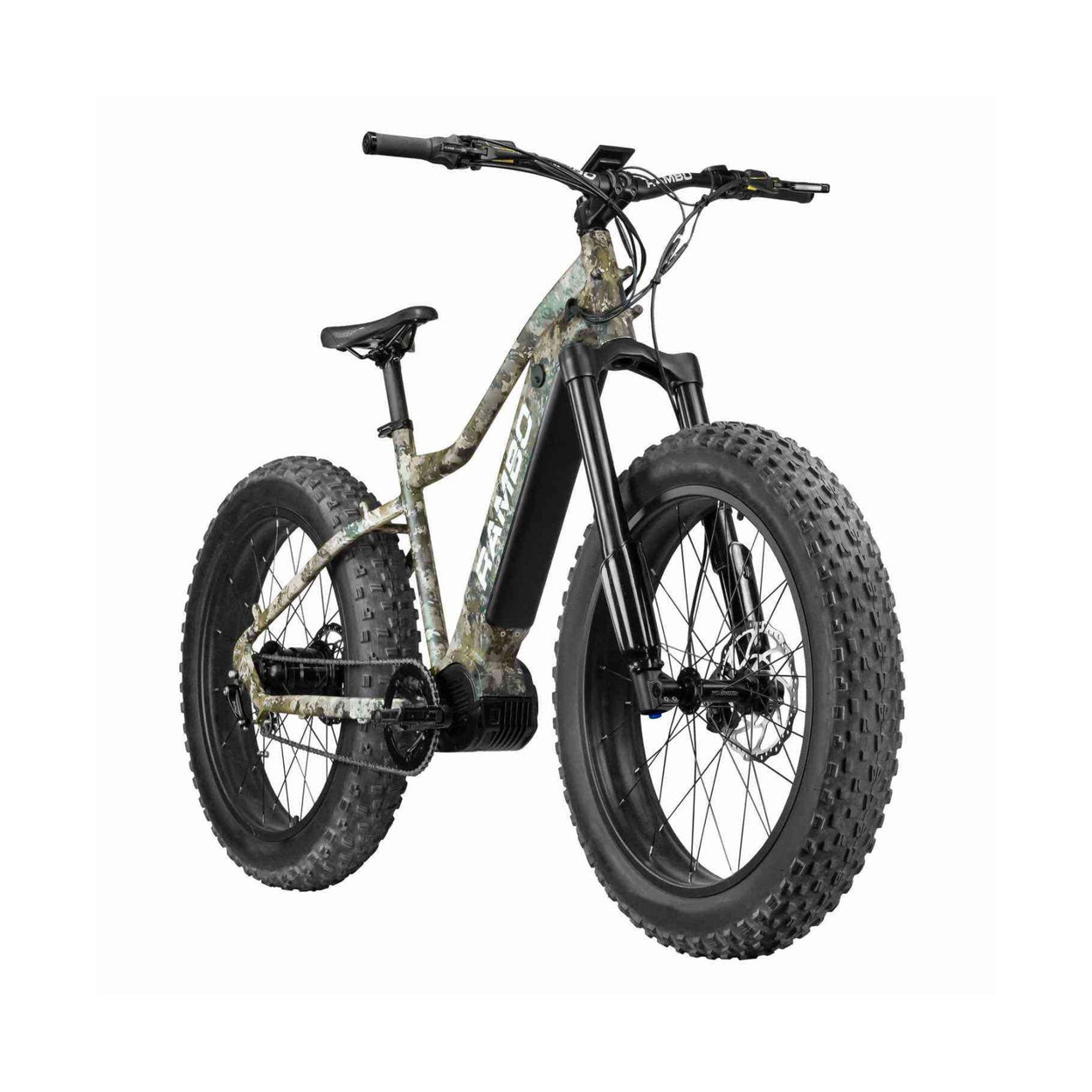ARTICLE
Motocaddy vs Stewart Electric Golf Push Carts 2024: Which Brand Wins?
Chris Lang
Read Time: 15 minutes

Electric golf push carts are more and more common on the golf course these days. Golfers are realizing the advantage of saving energy for their game instead of wearing themselves out walking the course. Walking 18 holes with a heavy bag puts a lot of stress on your body, and an electric caddy solves this.
If you are ready to buy an electric golf push cart, it can be hard to know where to start. Motocaddy and Stewart are two of the top brands many golfers consider.
The Rise of Electric Golf Push Carts
Think about this: Walking a full round of golf can easily add up to a few miles. Carrying or even pushing a heavy bag that entire way takes a real toll.
Electric golf push carts make the game more enjoyable whether you have an injury, want to reduce fatigue, or want to focus more on your shots.
What's driving this surge? Beyond a focus on health and fitness, the tech behind electric carts has come a long way. Batteries are lasting longer, and the carts have user-friendly features like downhill speed control, electronic brakes, and even GPS systems. Explore our golf electric push cart product range today. Also, in case you don't want to go electric, we also have regular golf push carts.
Motocaddy vs Stewart Electric Golf Push Carts Brand Comparison: A Head-to-Head
Both Motocaddy and Stewart have solid reputations in the golf world. However, their approaches to electric golf push cart design and function differ.
To help you decide which brand best suits you, this article will dig deep as we analyze the features, pros, and cons of each.
Motocaddy: An Overview

Motocaddy electric golf push carts are recognized for innovation and frequently introduces cutting-edge technology. Known for sleek designs and user-friendly interfaces, Motocaddy offers a range of models.
Key Features of Motocaddy Electric Golf Push Carts:
- Powerful Battery Life: Motocaddy prioritizes long-lasting batteries. This means you can count on your cart making it through multiple rounds on a single charge.
- Cutting-Edge Technology: Many models have GPS integration, giving you distances, hazard information, and even course mapping right at your fingertips.

- Intuitive Controls: Motocaddy carts come with simple and easy-to-use controls, ensuring a smooth and hassle-free golfing experience.
Advantages of Motocaddy Electric Push Carts
- Wide Selection: From basic to feature-rich, Motocaddy offers a cart for almost any golfer.
- Cutting-Edge Features: Motocaddy is known for pushing technological boundaries in its carts, giving golfers access to the latest innovations.
Disadvantages of Motocaddy Electric Push Carts
- Price: Advanced features usually come with a higher cost.
- Durability: Some users have reported durability concerns, particularly with some of the more intricate parts.
Stewart: An Overview

Stewart Electric Golf Push Carts are crafted with precision and performance in mind. With a reputation for using top-quality materials and an unwavering focus on build quality, Stewart offers carts designed for golfers seeking both style and substance.
Key Features of Stewart Electric Golf Push Carts:
- Robust Construction: Built to last, Stewart uses high-grade materials that can handle the rigors of regular golfing.
- Powerful Motors: Designed for tackling various terrains, ensuring a smooth ride even on hilly courses.
- Simple and Elegant Design: Many golfers appreciate the classic and understated design aesthetics of Stewart carts.
Advantages of Stewart Electric Push Carts
- Durability: Stewarts have a strong reputation for using top-notch materials built for long-lasting performance.
- Stable Performance: Stewart is known for its smooth, consistent operation, inspiring confidence on the course.
Disadvantages of Stewart Electric Push Carts
- Fewer Tech Features: You won't find features like GPS in their base models. However, they sometimes offer add-on options.
- Price Point: Stewart carts often sit at a premium price point.
Want to learn what a follow golf push cart is?
Price Range: Is One Brand Easier on the Wallet?
You'll find that both Motocaddy and Stewart electric golf push carts offer a range of models at different prices. Motocaddy generally has more budget-friendly options, especially at the lower end. Their entry-level models are quite affordable, making them accessible for golfers who want a reliable electric push cart without breaking the bank. As you move up in the Motocaddy range, the prices increase, but so do the features and capabilities, offering a good balance between cost and functionality.
Stewart's focus on premium materials and build quality is reflected in its higher starting prices. That said, its basic models still offer exceptional performance and longevity. The investment in a Stewart cart can be seen as paying for longevity and top-tier performance. For golfers who are willing to invest more upfront for a product that will last longer and provide consistent high-quality performance, Stewart is an attractive option. Both brands offer financing options and seasonal discounts, so it’s worth keeping an eye out for deals.
Battery Life and Performance

Both Motocaddy and Stewart have invested heavily in battery technology; they want golfers to rely on these carts for a minimum of 36 holes. Motocaddy's lithium batteries are known for their quick charging times and extended life cycles, often exceeding the 36-hole mark under optimal conditions. Their advanced battery management systems also ensure consistent power delivery and longevity, making them a reliable choice for frequent golfers.
Stewart, on the other hand, prides itself on the robustness and efficiency of its battery systems. Their batteries are designed to handle tougher terrains and varying weather conditions without compromising performance. While battery life can be impacted by course conditions, your battery should consistently get you through a full round or more. For both brands, checking specific model specifications is crucial to ensure the battery meets your needs. Additionally, both brands offer battery warranty programs to give you peace of mind.
Style, Design, and Build Quality

Motocaddy carts often feature sleeker, more modern designs with various color options to choose from. Their aesthetic is aimed at the contemporary golfer who values both form and function. Motocaddy's use of lightweight yet durable materials also contributes to their carts' portability and ease of use. The modern design is not just about looks; it also incorporates ergonomic handles and intuitive control systems that enhance the user experience on the course.
Stewart, in contrast, favors a more traditional, understated aesthetic that emphasizes build quality and durability. Stewart carts are constructed using high-quality metals and robust plastic components, designed to withstand the rigors of frequent use on diverse terrains. Your decision may come down to how much you value looks compared to sturdy performance. Stewart’s design philosophy is about longevity and reliability, ensuring that the cart remains a trusted companion over many golfing seasons. The classic design also appeals to golfers who prefer a timeless look over trendy styles.
Motocaddy vs Stewart: What Are Users Saying?
Reviews highlight Motocaddy's innovative features and ease of use. Users appreciate the intuitive controls, GPS integration, and app connectivity that some of the higher-end models offer. These features can significantly enhance the overall golfing experience, providing convenience and additional functionality on the course. However, some users have noted concerns about the long-term durability of certain components, particularly in more affordable models. This feedback underscores the importance of considering long-term reliability alongside initial features.
Feedback for Stewart focuses on its build quality, power on various terrains, and reliability. Many users commend Stewart carts for their robust construction and consistent performance, even in challenging conditions. This further emphasizes the importance of choosing a brand that aligns with your priorities. If you play on courses with varied terrain or in different weather conditions, Stewart's reliability might outweigh other considerations. Conversely, if you prioritize cutting-edge features and modern design, Motocaddy could be the better fit. Both brands have strong followings, and user reviews can provide valuable insights into how each cart performs in real-world conditions.
Ultimately, deciding between a Motocaddy or a Stewart electric golf push cart can significantly impact your enjoyment of the game. Considering your individual needs and preferences is key to making the right choice. For those who value advanced features and a modern design, a Motocaddy might be the perfect fit. Conversely, golfers prioritizing durability, consistent performance, and a classic aesthetic might find a Stewart more aligned with their needs.
Conclusion
Choosing the right electric golf push cart from Motocaddy or Stewart depends on what you value most. It's also vital to assess your budget and what matters to you on the course. If high-tech is a priority, then Motocaddy is your choice. But for durability and long-lasting power, it is tough to top Stewart.
No matter what, always test different models and brands, if possible, before investing. This will help ensure you are happy with your purchase for years to come.
Ultimately, the best electric golf push cart for you hinges on your individual needs, preferences, and budget. Carefully consider what matters most to you, whether it's cutting-edge features, robust construction, battery life, or price.
By weighing these factors against the detailed insights provided in this Motocaddy vs. Stewart electric golf push carts brand comparison, you'll be well-equipped to make a decision that elevates your golfing experience for years to come.
Q: What are the top features to consider when choosing an electric golf push cart?
A: Some key features to consider include battery life, foldability for easy storage, remote control capabilities, and follow mode options.
Q: Which brand offers the best electric golf push carts for 2024?
A: Brands like Motocaddy, Stewart Golf, and MGI are known for producing some of the best electric golf push carts on the market.
Q: What is the difference between a regular golf cart and an electric golf push cart?
A: Electric golf push carts are motorized and designed to assist golfers in carrying their clubs and gear around the course, while regular golf carts require manual steering and operation.
Q: Can electric golf push carts be controlled remotely?
A: Yes, many electric golf push carts come equipped with remote control functionalities, allowing golfers to maneuver the cart with ease.
Q: How long does the battery of an electric golf push cart typically last?
A: The battery life of an electric golf push cart can vary depending on usage, but most models offer several rounds of golf on a single charge.
Q: Are there electric golf push carts available with GPS features?
A: Yes, some models like the Motocaddy M7 GPS offer built-in GPS capabilities to provide golfers with accurate course mapping and distance measurements.
Q: What is the advantage of using an electric golf push cart over carrying a golf bag?
A: Electric golf push carts help reduce strain on golfers by carrying the weight of the golf bag, allowing players to move comfortably around the course without physical exertion.
Q: Are there electric golf push carts with follow mode for hands-free operation?
A: Yes, certain models like the Stewart X10 Follow and Motocaddy M7 Remote Electric feature follow mode technology, where the cart autonomously follows the golfer around the course.
Q: How does an electric golf push cart benefit golfers during a round of golf?
A: Electric golf push carts provide convenience, efficiency, and relief from carrying a heavy golf bag, allowing golfers to focus on their game and enjoy a more relaxed round of golf.
Articles
More Articles

Backyard DIY Golf Net Setup: The Complete Guide to Building Your Home Practice Area

Best Golf Net for Home: Find Your Perfect Practice Net for Golf Hitting


